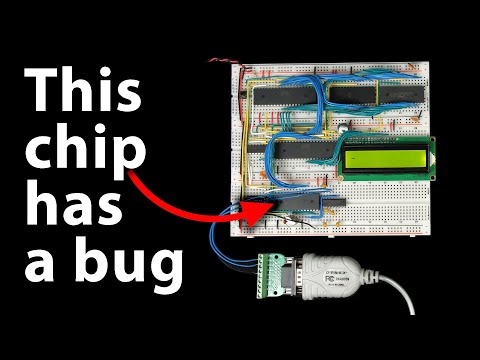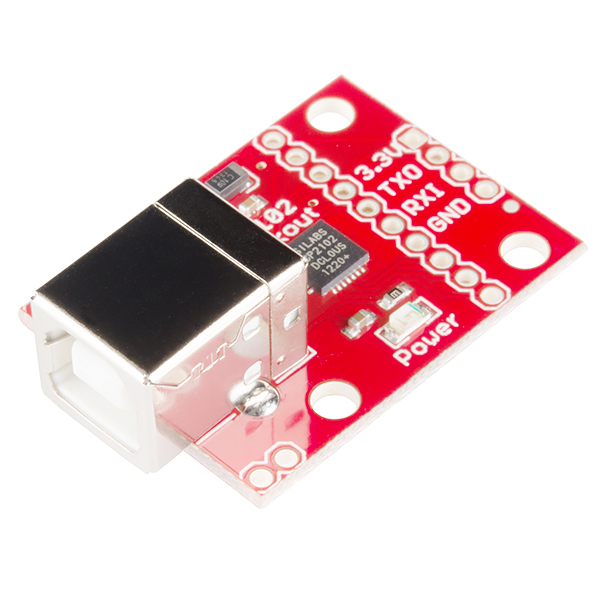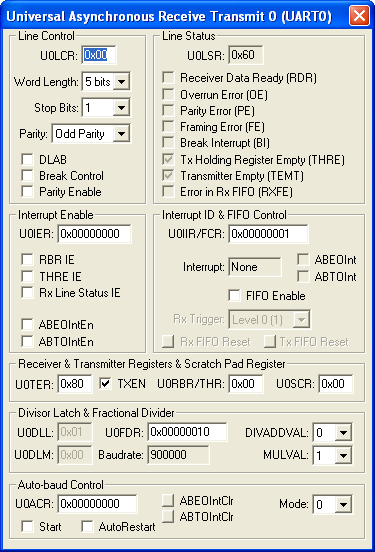Hardware Uart Break Detection
Introduction:
In the realm of serial communication, one of the critical challenges is detecting breaks or errors to ensure the accuracy and reliability of data transmission. To address this issue, hardware UART break detection mechanisms come into play. These mechanisms enable the detection of transmission errors, such as frame synchronization errors, parity bit errors, buffer overruns, and checksum failures. This article explores the various types of hardware UART break detection mechanisms and how they contribute to reliable serial communication.
Types of UART Break Detection Mechanisms:
1. Start Bit and Frame Synchronization Techniques:
The most fundamental break detection mechanism relies on the start bit and frame synchronization techniques. Here, the UART receiver looks for the start bit to initiate data reception and ensures that subsequent bits match the expected framing parameters. If the received data deviates from the expected start bit or frame structure, an error condition is flagged, indicating a possible break in communication.
2. Parity Bit Error Detection Method:
Another widely used hardware UART break detection mechanism involves the utilization of parity bits. In this approach, a parity bit, either even or odd, is added to the data frame during transmission. During reception, the parity of the received data is checked against the expected parity. If there is a mismatch, the receiver identifies an error, indicating a break in communication.
3. Checksum Calculation and Verification:
Checksum calculation and verification offer another layer of hardware UART break detection. The transmitter calculates a checksum based on the data frame, usually using a simple mathematical operation such as the XOR or bit addition. This checksum is appended to the frame before transmission. The receiver then performs the same calculation and compares the received checksum with the calculated one. A mismatch between the two suggests a break in communication.
4. CRC (Cyclic Redundancy Check) Error Detection:
CRC, or Cyclic Redundancy Check, is a widely adopted error detection method in hardware UART. It involves performing polynomial division on the entire data frame, resulting in a remainder that acts as an error detection code. Both the sender and receiver perform the same polynomial division, and the receiver compares the received remainder with the calculated remainder. If they differ, a break in communication is detected, ensuring data integrity.
5. Buffer Analysis and Error Detection:
Buffer analysis is a vital mechanism for detecting breaks caused by buffer overruns. It involves constantly monitoring the transmit and receive buffers’ occupancy levels. If the buffer crosses certain thresholds, such as being full or empty, it signifies a break in communication. This ensures that no data is lost or overwritten, maintaining the integrity of the transmitted and received information.
6. Time-Out Mechanism for Break Detection:
Time-out mechanisms play a crucial role in hardware UART break detection, especially when the expected data does not arrive within a specified time frame. Upon initiating data reception, the receiver waits for a predefined interval for the start bit and subsequent bytes. If no data arrives within this time window, it indicates a break in communication.
7. Interrupt-Based UART Break Detection:
Interrupt-based break detection is an efficient method that utilizes interrupts to detect breaks during serial communication. The UART controller generates an interrupt whenever a break or error condition is detected. The processor can then respond accordingly by handling the interrupt, ensuring timely error detection and recovery.
8. Hardware Support for Break Detection:
Various UART chips and modules provide dedicated hardware support for break detection mechanisms. These components often have built-in error detection and correction features, allowing for more reliable and efficient break detection. They offload the processor from performing error detection tasks, enhancing the overall system performance.
FAQs:
Q1. Why is break detection essential in UART communication?
A1. Break detection is crucial in UART communication as it ensures the accurate and error-free transmission of data. By detecting breaks or errors, it enables the identification and correction of data discrepancies, thereby enhancing the reliability of the communication process.
Q2. How can UART break detection mechanisms help prevent data loss?
A2. UART break detection mechanisms, such as parity bit error detection, checksum calculation, and CRC error detection, help in identifying transmission errors. By detecting these errors, data loss can be prevented or minimized, ensuring the integrity of the transmitted information.
Q3. What happens if a break in communication is detected by the UART receiver?
A3. When a break in communication is detected, the UART receiver can raise an error flag or generate an interrupt, signaling the presence of an error. This allows the system to take appropriate actions, such as retransmitting the data or alerting the user about the error condition.
Q4. Can software-based solutions replace hardware UART break detection?
A4. While software-based solutions can provide some level of error detection, hardware UART break detection mechanisms offer distinct advantages in terms of efficiency and reliability. These hardware mechanisms can offload the processor and provide dedicated error detection features, allowing for more efficient and robust serial communication.
Q5. What hardware components support UART break detection?
A5. Several UART chips and modules available in the market offer hardware support for break detection mechanisms. These components often have integrated error detection and correction features, making them ideal for reliable and high-performance serial communication applications.
Conclusion:
Hardware UART break detection mechanisms are indispensable for ensuring reliable serial communication. By detecting breaks and errors using various techniques such as frame synchronization, parity bit error detection, checksum verification, CRC error detection, buffer analysis, time-out mechanisms, interrupt-based detection, and dedicated hardware support, these mechanisms significantly contribute to maintaining data integrity and preventing loss during transmission. Incorporating these mechanisms into UART communications systems improves efficiency, reliability, and overall system performance.
Fixing A Hardware Bug In Software (65C51 Uart)
What Is A Break Signal In Uart?
The Universal Asynchronous Receiver Transmitter (UART) is an essential hardware component used for serial communication between devices. UART works by converting parallel data from a microcontroller or computer into a serial data stream that can be transmitted over a communication line, and vice versa. To facilitate efficient and reliable data transmission, UART employs various signaling techniques, one of which is the break signal.
A break signal is a special transmission frame in UART communication that consists of a low-level signal for a specified duration. Unlike regular data frames, which consist of start, data, parity, and stop bits, the break signal is a continuous low-level signal lasting for a longer duration. This break condition provides an indication to the receiving end that something unexpected has occurred in the data transmission sequence.
The break signal is typically generated by the transmitting device and transmitted to the receiving device. It can be utilized for various purposes, including device synchronization, error detection, and resetting the communication line.
Uses of Break Signal in UART:
1. Frame Synchronization: The break signal is commonly used as a frame synchronization mechanism. When a transmitting device sends a continuous low-level signal (a break condition) for a specified duration, the receiving device recognizes this as a break signal frame and synchronizes its internal data buffer accordingly. This synchronization helps ensure that data is correctly received and interpreted.
2. Error Detection: The break signal can also be employed for error detection purposes. If a receiving device does not receive a break signal as expected, it can infer that an error has occurred during the transmission. This error could be due to a faulty transmission line, a disconnected device, or some other issue. By monitoring the presence or absence of the break signal, the receiving device can detect and potentially address potential errors.
3. Line Reset: In certain situations, the break signal is used to reset the UART communication line. When a transmitting device sends a break signal, the receiving device recognizes it as a line reset command. This can be useful for restarting communication or addressing specific conditions that require a reset.
Frequently Asked Questions (FAQs):
1. How is a break signal transmitted in UART communication?
In UART, a break signal is generated by sending a continuous low-level signal for a specific period (usually longer than a full frame). This causes a sustained low-voltage condition on the communication line, indicating the presence of a break signal.
2. Can the break signal be used during normal data transmission?
The break signal is primarily used for specific purposes such as frame synchronization, error detection, and line reset. It is not typically used during normal data transmission as it interrupts the regular data frames required for communication.
3. How is the break signal detected by the receiving device?
The receiving device continuously monitors the incoming data stream. When it detects a sustained low-level signal for a duration longer than a full data frame, it recognizes it as a break signal. The receiving device then takes appropriate actions based on the specific purpose for which the break signal is being used.
4. Is the break signal standardized in UART communication?
Yes, the break signal is part of the UART standard. The duration and characteristics of the break signal may vary depending on the specific UART implementation or standard being used.
5. What happens if a break signal is not received during communication?
If a break signal is expected but not received during communication, it may indicate an error condition. The absence of a break signal could be a result of a transmission line fault, a disconnected device, or other issues. In such cases, the receiving device may trigger error handling routines or communication recovery mechanisms.
In conclusion, the break signal plays a significant role in UART communication. It serves multiple purposes, including frame synchronization, error detection, and line reset. By understanding and utilizing the break signal effectively, developers and engineers can ensure reliable and error-free serial communication between devices.
How Is Data Detected In A Uart?
Universal asynchronous receiver/transmitter (UART) is a crucial component in modern communication systems. It enables the transmission and reception of data between different devices using a series of electrical signals. Understanding how data is detected in a UART is essential in comprehending the inner workings of this widely used technology. In this article, we will delve into the details of how data is detected in a UART and shed light on the key mechanisms involved.
UART Basics
Before diving into the intricacies, let’s first establish a basic understanding of UART. A UART is a hardware device or a microchip that facilitates serial communication between devices. It converts parallel data from a device into a serial stream of data that can be transmitted over a communication channel. Similarly, it can receive a serial stream of data and convert it back into parallel data for processing by the receiving device.
UARTs operate asynchronously, which means they do not require a common clock signal for data transmission. Instead, they rely on a start bit, followed by the actual data bits and optional parity or stop bits. The start bit alerts the receiving device that a data byte is about to be transmitted. Upon receiving the start bit, the UART begins sampling the subsequent data bits at specific time intervals.
Detecting Data
To detect the data transmitted through a UART, the receiving device continually samples the incoming signal. Sampling refers to the process of reading the voltage level of a signal at specific time intervals. The UART uses a baud rate, which specifies the number of times it samples the incoming signal per second. This baud rate determines the speed at which data is transmitted and therefore plays a vital role in detecting the data correctly.
Upon receiving the start bit, the UART samples the voltage level of the incoming signal at specific intervals that align with the set baud rate. The intervals are equal to the reciprocal of the specified baud rate. For instance, if the baud rate is 9600, the UART samples the signal every 1/9600 seconds.
To ensure accurate detection, the receiver must synchronize its sampling with the transmitting device. This synchronization is achieved by carefully matching the baud rates on both ends of the communication link. If the baud rates do not match, the receiving device may sample the incoming signal at incorrect intervals, leading to data corruption.
Start Bit Detection
When the UART detects a start bit (a transition from high to low voltage), it begins counting intervals to sample the following data bits. The start bit’s purpose is to alert the receiver of an incoming data byte and allow it to synchronize its sampling with the transmitting device. After detecting the start bit, the UART waits for half a baud interval before sampling the first data bit.
Sampling Data
Once the start bit is detected, the UART samples each subsequent data bit at precise intervals that correspond to the set baud rate. It samples the center of each data bit to ensure accurate detection, as noise or fluctuations might occur at the edges of the bit. By sampling the center, the UART can more reliably determine the voltage level of the bit, whether it is high or low.
Parity and Stop Bit Detection
After the data bits are sampled, the UART might also implement parity and stop bit detection. Parity checking checks for errors in the received data byte. It can be even parity, where the number of bits set to one in the data byte is expected to be even, or odd parity, where the number of set bits is expected to be odd. If the received data byte does not match the specified parity, the UART flags it as an error.
Following the data bits, one or two stop bits are transmitted to signal the end of the data byte. These stop bits have a constant voltage level, usually high. The UART monitors these stop bits to verify the integrity of the received data. If the stop bits are not received as expected, an error condition is signaled.
FAQs
Q: Can I change the baud rate during the data transmission process?
A: Changing the baud rate in the middle of a transmission would result in data corruption. The baud rate needs to be consistent between the transmitting and receiving devices throughout the entire communication process.
Q: How does UART handle noise or signal interference?
A: UART implementations often include error detection and correction mechanisms to counteract noise or signal interference. These mechanisms involve error checking through parity or cyclic redundancy check (CRC) techniques to ensure accurate data reception.
Q: Can UART operate in half-duplex mode?
A: Yes, UART can operate in half-duplex mode, where data can be transmitted in both directions but not simultaneously. This mode is useful in scenarios where two devices take turns transmitting and receiving data.
Q: Is UART still relevant with the prevalence of modern communication protocols like USB and Ethernet?
A: Absolutely! UART is still widely used in various applications as it offers a simple and cost-effective solution for communication between different devices. It has lower overhead compared to more complex protocols like USB or Ethernet, making it ideal for many applications where simplicity and efficiency are of utmost importance.
In conclusion, UART plays a vital role in data communication between devices. By properly synchronizing the baud rates, detecting start bits, sampling data, and verifying parity and stop bits, UART ensures reliable data reception. Its simplicity, efficiency, and widespread use across diverse industries demonstrate its enduring relevance in modern communication technologies.
Keywords searched by users: hardware uart break detection
Categories: Top 94 Hardware Uart Break Detection
See more here: nhanvietluanvan.com
Images related to the topic hardware uart break detection

Found 44 images related to hardware uart break detection theme







![CP2102 6-pin USB 2.0 to TTL UART Serial Converter Module CP2102 6-pin USB 2.0 to TTL UART Serial Converter Module [RKI-1155] - ₹182.00 : Robokits India, Easy to use, Versatile Robotics & DIY kits Cp2102 6-Pin Usb 2.0 To Ttl Uart Serial Converter Module Cp2102 6-Pin Usb 2.0 To Ttl Uart Serial Converter Module [Rki-1155] - ₹182.00 : Robokits India, Easy To Use, Versatile Robotics & Diy Kits](https://robokits.co.in/bmz_cache/d/d44826ee0ea4fba8cd4bdd30e89dbf18.image.1066x800.jpg)
Article link: hardware uart break detection.
Learn more about the topic hardware uart break detection.
- Contents – Basic Operation of UART with Protocol Support
- UART break detection failed – Nordic Q&A
- Detecting a break condition over UART on ATmega328P
- Universal Asynchronous Receiver Transmitter (UART)
- Contents – Basic Operation of UART with Protocol Support
- 20 Questions MCQ Test | Test: UART: Embedded Systems I/O – EduRev
- Portable UART Data Receiver/Tester – Engineers Garage
- Basics: The Universal Asynchronous Receiver/Transmitter (UART)
- Break detection on LPC 546xx – NXP Community
- SCI Break Detection and Processing in Asynchronous Mode
- UART Break Detection on EFM8 – Silicon Labs Community
- Universal asynchronous receiver-transmitter – Wikipedia
- Is it possible to use STMG070 USART break detectio…
- How to detect serial break – Arduino Forum